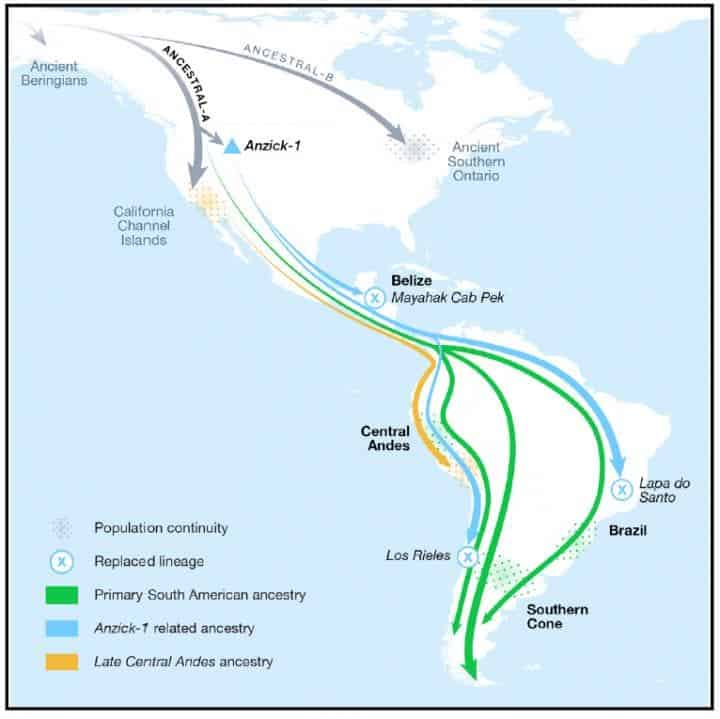
Scientists analyzed the ancient DNA of individuals who lived in Central and South America up to 10,000 years ago and found that these regions were settled by at least three waves of migration. The studies paint a rich and diverse history of the Americas, suggesting that the people who formed these migratory waves branched out of a single population that crossed the Bering Strait into North America about 15,000 years ago.
“Our work multiplied the number of ancient genomes available from these areas by about 20, giving us a much more comprehensive picture of indigenous history in the Americas,” co-senior author David Reich, a geneticist at Harvard Medical School and the Howard Hughes Medical Institute, said in a statement. “This broader dataset reveals a common origin of North, Central, and South Americans as well as two previously unknown genetic exchanges between North and South America.”
The DNA collected from 49 individuals who lived in Belize, Brazil, the Central Andes, and southern South America shows that they all originate from the same ancestral population that colonized North America. In and of itself, this fact is not particularly remarkable because scientists have always known that Central and South America were peopled by a migration that moved southward. However, what was truly surprising about the findings of three new ancient DNA studies, all published this week (Cell, Science, Science Advances), was that there were multiple distinct migratory movements — some that mixed, others that formed new lineages.
Archaeologists believe that the Clovis people were the first to pass through the land bridge between Siberia and Alaska, which is now underwater, settling in the lower 48 states some 13,000 years ago. The Clovis culture was named after flint spearheads found in the 1930s at a site in Clovis, New Mexico. These mammoth-hunting people are considered to be the ancestors of most of the indigenous cultures of the Americas. Now, the new genomic analysis has yielded fresh insights into how Clovis people may have spread across the Americas.
Researchers compared the genome of a Clovis toddler who lived in Montana about 12,700 years ago to the earliest genome analyzed from South and Central America dating to between 9,000 and 11,000 years ago. The analysis revealed a common ancestry between the remains found in Montana and Lagoa Santa in Brazil, which suggests that the Clovis made a major impact much further south. Previously, anthropologists believed that the people at Lagoa Santa originated from a separate migration from Asia.
“We weren’t expecting to find a relation to people associated with the Clovis culture in South America,” says co-first author Nathan Nakatsuka from Harvard. “But it seems the expansion of the Clovis-associated lineage extended to parts of Central and South America.”
From around 9,000 years ago, however, the Clovis culture-associated ancestry completely disappeared in Peru. We don’t know what was the cause of such a dramatic large-scale population replacement but what seems certain is that the region was populated by a separate wave of migration, which showed remarkable continuity compared to Eurasia and Africa.
“There is remarkable continuity between earlier and later skeletons with South Americans today,” said Cosimo Posth, an archaeogeneticist from the Max Planck Institute for the Science of Human History. “For example, modern-day Quechua and Aymara from the Central Andes can trace their ancestry back to the ancient people of the Cuncaicha site from 9,000 years ago onwards. This is a longer-standing continuity than you see in other continents.”
The big question right now is why the branching occurred so fast. What seems certain is that the narrative of humanity’s distribution across the Americas is far more complex than meets the eye.
“We’re very enthusiastic about the prospects for a much richer understanding of American population history, but this is still a vast region full of geographic and chronological holes,” says Reich. “We’d like to collect more genetic material from earlier and later sites and from more countries, such as Colombia, Venezuela, and other parts of Brazil. We also want to examine the evolution of genetic traits over time.”






